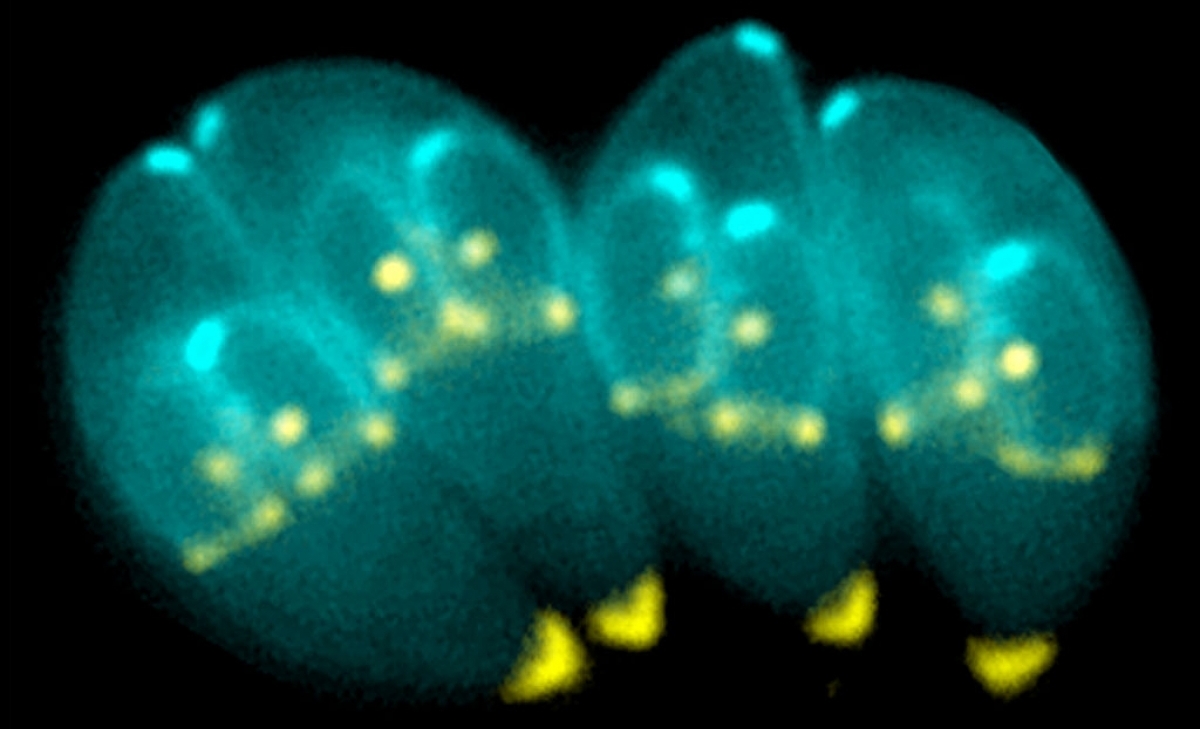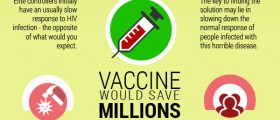Toxoplasma gondii is a protozoan parasite that is normally found in the cat, the primary host of the parasite and sporadically affects humans. The person may get infected after consuming raw infected meat or vegetables contaminated with parasites. The parasite in pregnant women suffering from active toxoplasmosis may easily pass the placenta and trigger one of the most severe congenital illnesses, congenital toxoplasmosis.

Two Stages of Infection
Within the first few weeks after the exposure to the parasite, the infected person may develop flu-like symptoms or is completely asymptomatic. The parasite practically causes no symptoms in perfectly healthy individuals. However, immunocompromised people e.g. those suffering from AIDS, certain cancers and patients who take immunosupressants may develop severe from of the infection. They are prone to encephalitis and associated neurological deficits. The parasite also triggers damage to the heart, liver, eyes etc.
The infection goes through two stages, acute form of the disease and latent toxoplasmosis. Acute toxoplasmosis is characterized by symptoms that resemble flu infection. Muscle aches and pains along with lymphadenomegaly (enlargement of lymph nodes) are two characteristics of the infection. In the majority of cases the swelling of lymph nodes initially affects the armpits and then spreads to inguinal lymphatics. These may remain enlarged for more than a month. In rare instances healthy people may additionally suffer damage to the eyes. As it has already been mentioned patients with impaired immune system develop more severe form of the disease. Inflammation of the brain and necrotizing retinochoroiditis are two quite serious inflammatory reactions triggered by the parasite.
Latent toxoplasmosis generally occurs in immunocompromised people. In them the parasite forms cysts that are mostly distributed in the brain, the rest of the nervous system and muscles.
Detection of Toxoplasmosis
The infection can be confirmed with the assistance of the polymerase chain reaction (PCR) performed on samples of patient's blood. Now, in case there is no active form of the disease and patients only have the cysts in their body this test is practically inefficient.
Microscopic examination of enlarged lymph nodes show scattered epithelioid histiocytes, monocytoid cells and large germinal centers all of which point to the presence of the infection.
It may be sometimes rather challenging to differentiate toxoplasmosis of the brain from primary central nervous system lymphoma. In such case doctors usually refuse to perform brain biopsy because of many potential complications. Instead they opt for a trial of therapy with the combination of pyremethamine, sulfadiazine and leucovorin.
It is much easier to confirm the presence of the infection if patients say that they have consumed raw or partially cooked meat (particularly pork ad lamb). Also, hand-to-mouth contact while gardening and cleaning a cat's litter box are ways of possible introduction of the parasite into the body.
Treatment Options
People who are asymptomatic actually never turn to their doctors and receive no treatment. Since they are most commonly healthy their body goes through the infection successfully. After certain period of time the body produces specific antibodies, witnesses of the previous infection caused by Toxoplasma gondii.
Furthermore, individuals with flu-like symptoms also fully recover without any specific measures. In case their lymph nodes remain enlarged, these are biopted and microscopically evaluated because sometimes similar symptoms may occur in people who are suffering from lymphoma. Pathohistological characteristics of the two conditions are sufficient enough for proper differentiation.
The very treatment for toxoplasmosis is indicated in immunocompromised patients who have contracted the parasite. They may also prevent the infection with prophylactically administered Bactrim. The drug itself has no effects once the infection develops.
Two most commonly prescribed drugs for acute form of toxoplasmosis are pyrimethamine and sulfadiazine. The former is actually a drug used against malaria while the latter is an antibiotic which is not efficient per se while administered together with pyrimethamine may eradicate the parasite. All patients additionally take folic acid supplements. Supplementation of folic acid prevents a drop in platelets. Some patients who do not respond well previously mentioned drugs may try taking clindamycin or spiramycin, both of which belong to a group of antibiotics. Spiramycin is additionally indicated in pregnant women who might have contracted the parasite and are at risk of passing it to their child. Unfortunately, patients with latent toxoplasmosis have not adequate treatment because cysts are in general resistant to all drugs. However, certain amount of success is achieved with atovaquone in the combination with clindamycin.
As for epidemiology, according to data from the period between 1999 and 2004 IgG antibodies reflecting toxoplasmosis were confirmed in 10.8% of all American men between 6 and 49 years of age and in 11.90% of women between 15 and 44 years of age. So these individuals had the infections at some point of their lives without even knowing it. Today scientist estimate that 30-65% of word population is infected with the parasite. Variations between countries are rather high. For instance, over 80% of French people are carriers while South Korean's rate is only 4.3%.
- www.cdc.gov/parasites/toxoplasmosis/gen_info/faqs.html
- www.cdc.gov/parasites/toxoplasmosis/index.html
- Photo courtesy of CatherineMunro by Wikimedia Commons: commons.wikimedia.org/wiki/File:Toxoplasma_gondii.jpg
















Your thoughts on this
Loading...